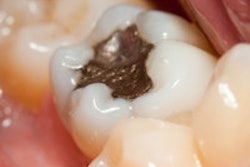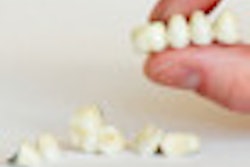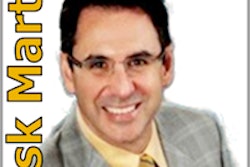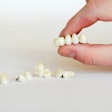A Medical College of Georgia (MCG) researcher is developing a new nanotechnology technique he hopes will extend the longevity of composite restorations.
With a two-year, $252,497 grant from the National Institute of Dental and Craniofacial Research, Franklin Tay, B.D.Sc., Ph.D., an associate professor of endodontics in the MCG School of Dentistry, is trying to prevent the aging and degradation of resin-dentin bonding by feeding minerals back into the collagen network, MCG announced.
Dr. Tay plans to investigate guided tissue remineralization, a new nanotechnology process of growing extremely small, mineral-rich crystals and guiding them into the demineralized gaps between collagen fibers.
"Dentin adhesives bond well initially, but then the hybrid layer between the adhesive and the dentin begins to break down in as little as one year," Dr. Tay said in a press release. "When that happens, the restoration will eventually fail and come off the tooth." Our adhesives are not as good as we thought they were, and that causes problems for the bonds."
His idea came from examining how hydroxyapatite crystals form in nature. "Eggshells and abalone shells are very strong and intriguing," Dr. Tay said. "We're trying to mimic nature, and we're learning a lot from observing how small animals make their shells."
Dr. Tay plans to use calcium phosphate, a mineral that's the primary component of dentin, enamel, and bone, and two protein analogs also found in dentin so he can mimic nature while controlling the size of each crystal. Crystal size is the real challenge, he added. Most crystals are grown from one small crystal into a larger, homogeneous one that is far too big to penetrate the spaces within the collagen network. Instead, Dr. Tay plans to fit the crystal into the space it needs to fill.
"When crystals are formed, they don't have a definite shape, so they are easily guided into the nooks and crannies of the collagen matrix," he said.
In theory, the crystals should lock the minerals into the hybrid layer and prevent it from degrading. If Dr. Tay's concept of guided tissue remineralization works, he will create a delivery system to apply the crystals to the hybrid layer after the acid-etching process.
"Instead of dentists replacing the teeth with failed bonds, we're hoping that using these crystals during the bond-making process will provide the strength to save the bonds," Dr. Tay said. "Our end goal is that this material will repair a cavity on its own so that dentists don't have to fill the tooth."
Copyright © 2009 DrBicuspid.com



















